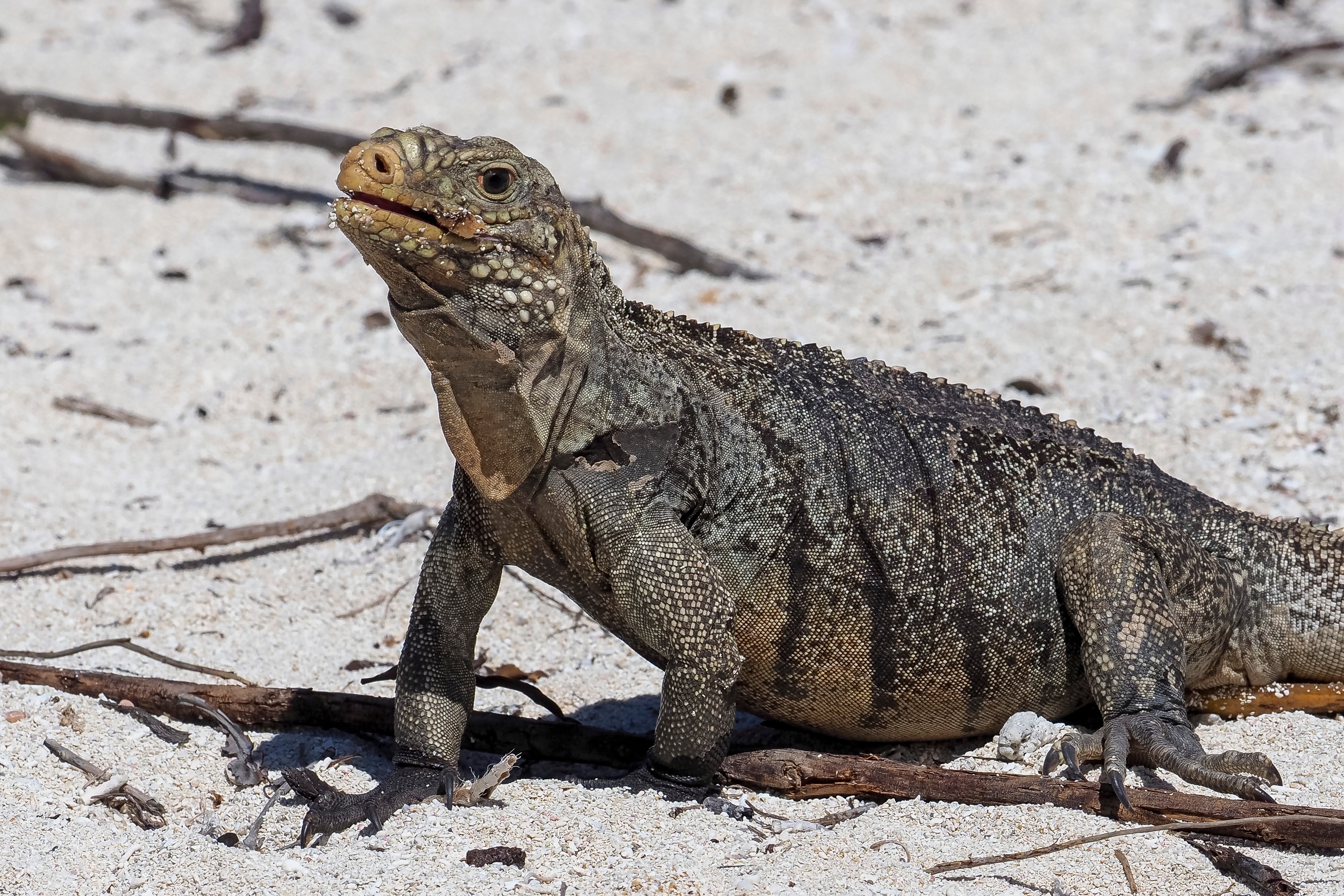Cuban rock iguana
(Cyclura nubila)

Description
The Cuban rock iguana (Cyclura nubila), also known as the Cuban ground iguana or Cuban iguana, is a species of lizard of the iguana family. It is the second largest of the West Indian rock iguanas (genus Cyclura), one of the most endangered groups of lizards. A herbivorous species with a thick tail and spiked jowls, it is one of the largest lizards in the Caribbean. The Cuban iguana is distributed throughout the mainland of Cuba and its surrounding islets with a feral population thriving on Isla Magueyes, Puerto Rico. A subspecies is found on the Cayman Islands of Little Cayman and Cayman Brac. Females guard their nest sites and one population nests in sites excavated by Cuban crocodiles. As a defence measure, the Cuban iguana often makes its home within or near prickly-pear cacti. The numbers of iguanas have been bolstered as a result of captive-breeding and other conservation programs. C. nubila has been used to study evolution and animal communication, and its captive-breeding program has been a model for other endangered lizards in the Caribbean. The Cuban iguana is a large lizard, only surpassed in size by the rhinoceros iguana on Hispaniola; it has an average body length of 40 centimeters (16 in) from snout to vent (the base of the tail). On rare occasions, individual males with lengths of 1.6 meters (5.2 ft) when measured from the snout to the tip of the tail have been recorded at the wildlife sanctuary within the Guantanamo Bay Naval Base with females being two thirds that size. The species is sexually dimorphic: males are much larger than females, and males have enlarged femoral pores on their thighs, which are used to release pheromones to attract mates and mark territory. The skin of male Cuban iguanas ranges in color from dark gray to brick red, whereas that of females is olive green with dark stripes or bands. In both sexes, limbs are black with pale brown oval spots and solid black feet. Young animals tend to be dark brown or green with faint darker striping or mottling in five to ten diagonal transverse bands on the body. These bands blend in with the body color as the iguana ages. Both sexes possess a dewlap (skin hanging below the neck) and a row of spines running down their back to their thick tail. Their heads and necks are short and stout, their teeth are solid and broad, and they have powerful jaw muscles. Their jowls, which grow larger as the animal ages, are covered in spiky protuberances called tubercles.
Taxonomic tree:







